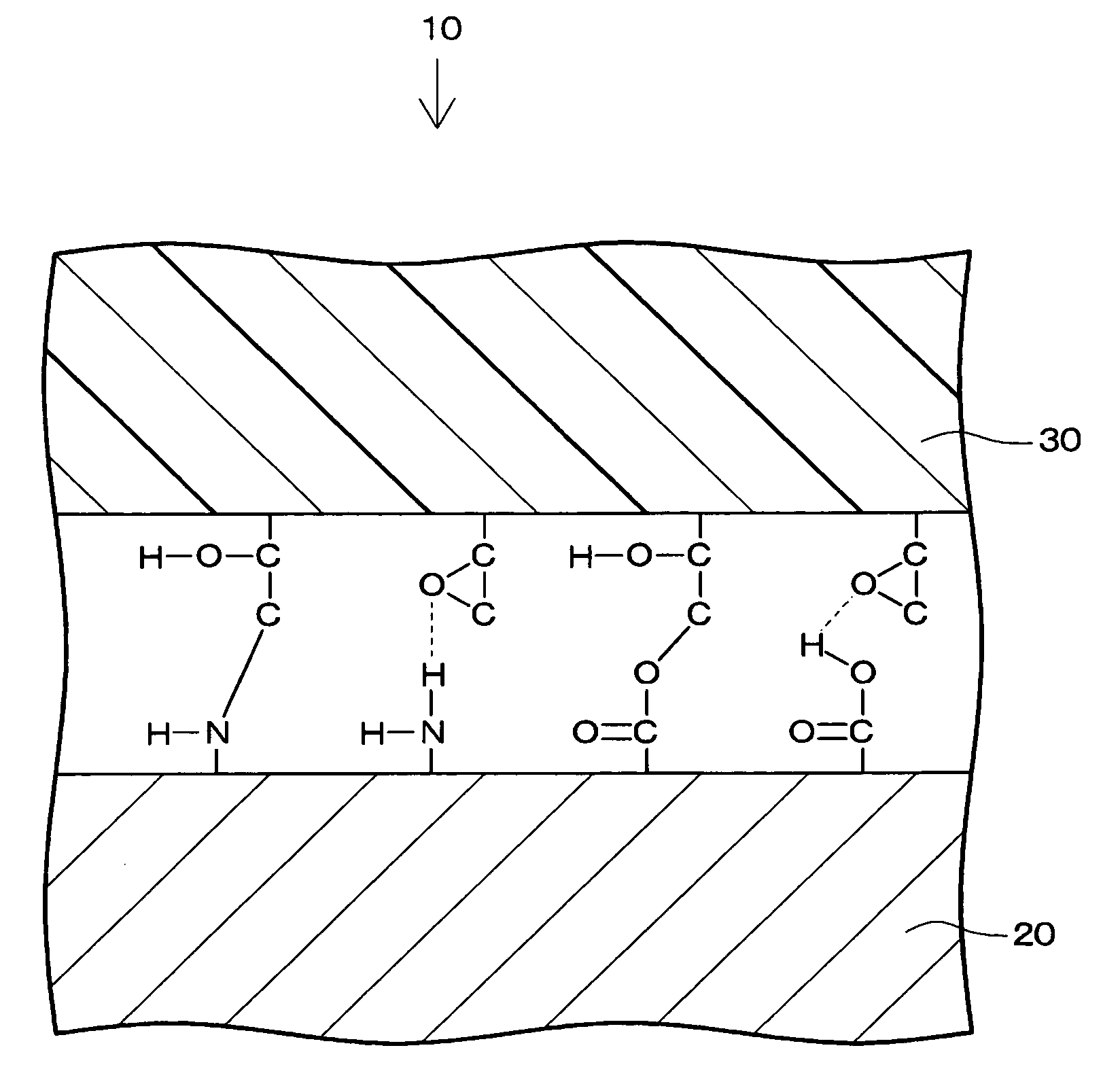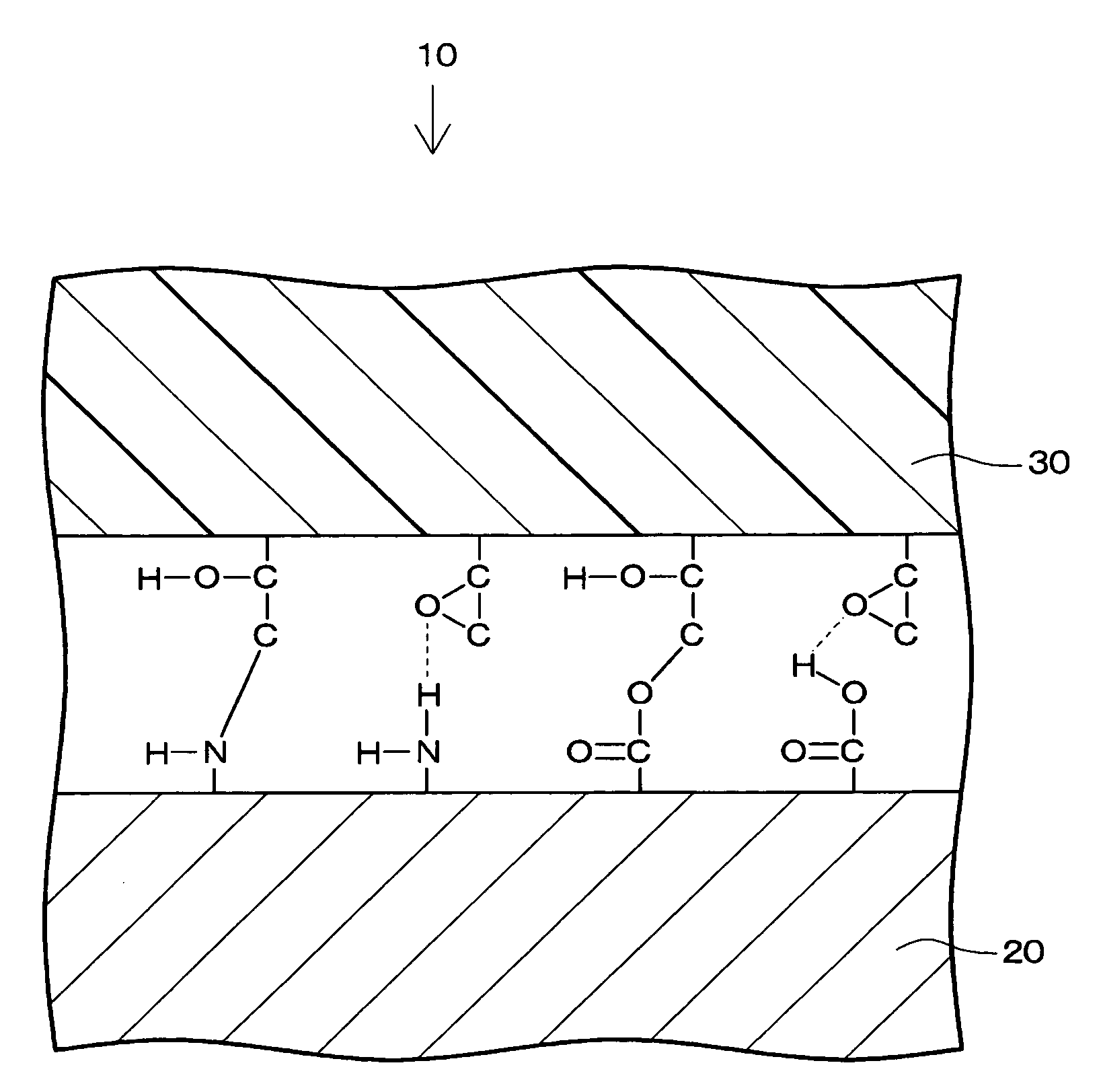Composite material engineered from metal and resin and production method thereof
a technology of composite materials and metals, applied in the field of composite materials, can solve the problems of large work processes, small adhesion strength of the anchoring method, and insufficient bonding strength, and achieve the effect of easy and uniform mixing of resins
- Summary
- Abstract
- Description
- Claims
- Application Information
AI Technical Summary
Benefits of technology
Problems solved by technology
Method used
Image
Examples
examples
[0036]An example of a composite material engineered from metal and resin according to the present invention is shown in FIG. 1. The composite material 10 has a metal portion 20 composed of metal on which surface at least one of a carboxyl group and an amino group is imparted, and a resin portion 30 in which an adhesion modifying agent including an epoxy group is mixed. The metal portion 20 and the resin portion 30 are bonded by a chemical bond at an interface between the metal portion 20 and the resin portion 30. The chemical bond is the one between the epoxy and at least one of the carboxyl group and the amino group.
[0037]Twenty five (25) examples of the present invention in each of which aluminum (A1050) was used for the metal portion were prepared and the adhesion strength thereof was evaluated. Another 15 comparative examples in each of which aluminum was used for the metal portion were prepared and the adhesion strength thereof was also evaluated.
[0038]The evaluation result of ...
second examples
[0059]The adhesion strength of the second examples and the second comparative examples which are same as above 25 examples and 15 comparative examples except for that the metal portion is not composed of aluminum (A1050) but of copper (C1100) is evaluated. The second examples and the second comparative examples were prepared by same manner as the above described examples and comparative examples.
[0060]The evaluation results of the adhesion strength of the second examples are shown in Table 3, and that of the second comparative examples are shown in Table 4. Further, the kind of the resin used in the resin portions of the second examples and the second comparative examples and the amount of adhesive modifying agent mixed in the resin for the second examples and the second comparative examples are also shown in Tables 3 and 4. Furthermore, compounds used for the surface treatment of the metal portions of the second examples and the second comparative examples are also shown in Tables ...
PUM
| Property | Measurement | Unit |
|---|---|---|
| thick | aaaaa | aaaaa |
| thick | aaaaa | aaaaa |
| thick | aaaaa | aaaaa |
Abstract
Description
Claims
Application Information
 Login to View More
Login to View More - R&D
- Intellectual Property
- Life Sciences
- Materials
- Tech Scout
- Unparalleled Data Quality
- Higher Quality Content
- 60% Fewer Hallucinations
Browse by: Latest US Patents, China's latest patents, Technical Efficacy Thesaurus, Application Domain, Technology Topic, Popular Technical Reports.
© 2025 PatSnap. All rights reserved.Legal|Privacy policy|Modern Slavery Act Transparency Statement|Sitemap|About US| Contact US: help@patsnap.com


